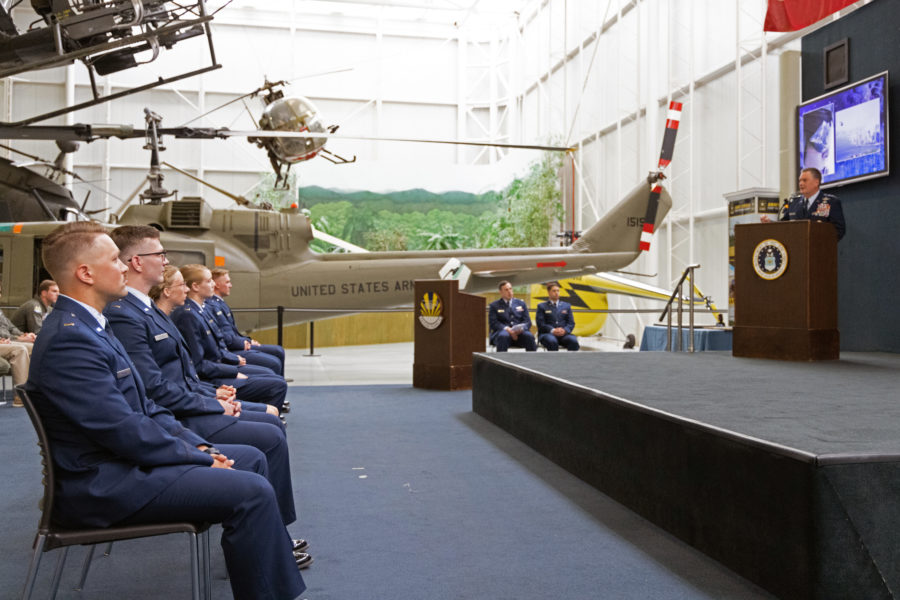For the first time in more than a quarter century, Air Force pilots have earned their wings from a helicopter-only training course.
Seven Airmen graduated June 22 at Fort Rucker, Ala., as part of the first class in the Helicopter Training Next program, one part in the larger Pilot Training Transformation initiative to accelerate training times and help address the service’s pilot shortage.
The last time the Air Force used a helicopter-only syllabus was in 1993, coinciding with the establishment of Air Education and Training Command. Typically, the helicopter pilot training pipeline lasts 17 months, including six months training on the fixed-wing T-6. The HTN program started in August 2020, with the first class graduating in less than 11 months.
“Today, you’ve established a new helicopter-only training,” Lt. Gen. Marshall B. “Brad” Webb, commander of AETC, told the new pilots at their graduation ceremony. “But, the focus for pilot training will always be, regardless of where you are in training, quality and competence. In many ways, the Helicopter Training Next program is the vanguard for all our other Air Force pilot training programs. That’s how successful you all have been.”
As part of the program, a small group tryout yielded eight pilots who went directly to Fort Rucker for training on the TH-1H helicopter trainer. A second small group started a month later and gained 50 flight hours through private and contracted instruction before joining the first group at Fort Rucker.
The two different training paths were planned from the outset, 19th Air Force Commander Maj. Gen. Craig D. Wills told Air Force Magazine last August.
By taking helicopter pilots out of fixed-wing aircraft training, not only did the Air Force cut down on training time, it may also free up spots in fixed-wing training in the future, as many as 60 to 80 every year, Willis said.
AETC still plans on producing up to 90 helicopter pilots per year by fiscal 2024, Col. Michael Curry, commander of the 58th Special Operations Wing, said in a release.
Helicopter Training Next is one of several programs the Air Force has implemented to overhaul its pilot training. The service has used programs such as Undergraduate Pilot Training 2.5 and Accelerated Path to Wings, relying on new technologies, such as simulators, and new teaching techniques. It has also implemented programs like Civil Path to Wings, offering faster training courses for students with civilian pilot experience.
While these new paths have cut down on training time for the relatively small group of graduates, they also face some resistance from senior aviators wary of changes to the usual training process. In 2020, Willis said the quality of the pilots that emerge from these new programs will be key to selling those who are skeptical about them. Speaking at the June 22 HTN graduation, Webb held the new pilots up as an example of that.
“The program that you’ve undergone is fundamental in developing the Airmen that we need going forward. It’s aimed at transforming the way we learn so that we are better postured for great power competition,” Webb said. “You’ve leveraged the modern day simulation and virtual reality and by any measure, you’ve been successful. Today, you join a world-class helicopter pilot force that enhances our Air Force’s lethality and readiness.”
